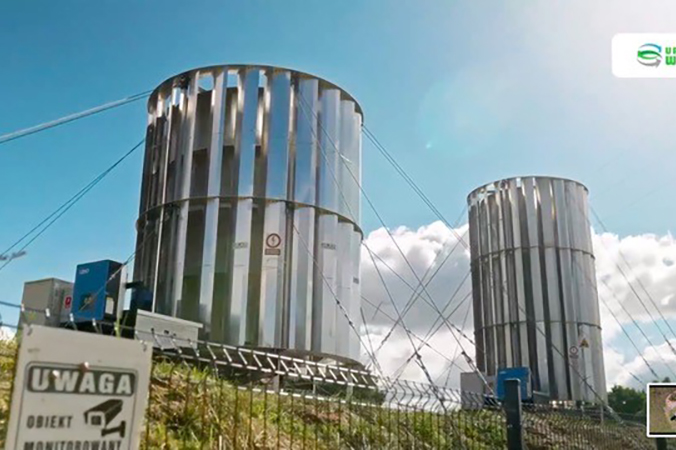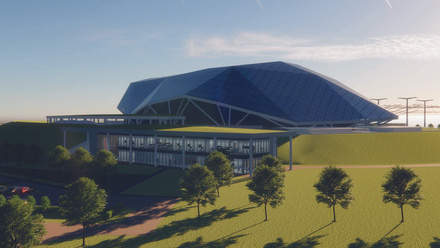Untapped wind – a breath of fresh air for clean energy?
A Poland-based urban wind project is using forced air streams generated by human activity to produce emission-free electricity.

The LIFE-UrbanWind.PL project is centred on an Urban Wind Power Station (UWPS) device, which its developers claim can convert mechanical energy generated from air flows at different types of test sites.
According to Jerzy Czaplejewicz of the Institute of Applied Sciences and New Technologies (INSiNT), which partnered with the ECO FOR LIFE Ecology Support Foundation, these air flows offer a significant resource of untapped wind energy.
'For many years, we have been observing the phenomena occurring in the so-called urbanised space in terms of air flows, especially the drafts of air existing between buildings, on the roofs of skyscrapers, industrial facilities, as well as inside buildings in tunnels or ventilation ducts,' he says.
The UWPS is based on a modular, cylindrical, wind turbine with a self-guiding system for optimal energy capture of the air stream to produce electricity, with automatic energy collection, storage and fastening systems.
Ten prototypes of the 3-4m-high wind turbines were built and tested at contrasting locations over varying periods between late 2020 and late 2021, before modifications were made to the generators on the devices. Further testing is ongoing.
This includes installing prototypes on the roof of the Accor chain’s 34-storey Novotel Centrum Hotel in Warsaw; the roof of a sea container near Gdańsk; on top of a 2m-high construction near Lublin; six devices at golf and country clubs; and on an artificial earth rampart almost 1m-high near the Polish tri-city of Gdańsk, Gdynia and Sopot.
Each turbine varies in its nominal power of 5kW, 10kW and 20kW, and uses the local air flows with irregular characteristics to power a generator with electricity-buffer storage.
Lower energy production levels than initially anticipated were reported at the first testing site – the Sobienie Królewskie golf and country club near Warsaw in late 2020-early 2021. Czaplejewicz says a new generation system was then introduced to power facilities onsite with enough excess energy generated to also power e-car charging stations.
In the Polish capital, the partners also installed a 5kW UWPS on the roof of the Novotel Centrum Hotel to test its effectiveness and potential in generating energy in a large urban surrounding.
'Tests have shown that building roofs are an excellent place to generate electricity and are still ongoing,” he says. 'We will also publish the results from other locations in the next three months.'
Czaplejewicz notes the overall results so far suggest that a hybrid version of the device, which is combined with photovoltaic panels, offers the optimal solution, with total power below 5kW on roofs and 20kW on the ground.
'On the ground, we suggest a system [that involves] placing many single hybrid units with one automation and control centre,' he continues. 'On the ground, the use of a unit with a higher power level over 20kW [is recommended].'
The partners’ next step is to build prototypes of a hybrid version that could be installed at road-side power plants and draws on three renewable energy sources.
The LIFE-UrbanWind.PL project has already received applications for single UWPS units, he says. A number of Polish cities have also expressed interest in the road-side hybrid power units and collaborating on testing the prototypes.
The project is also in talks with companies to manufacture and distribute the devices. 'Our idea is that in each [EU] country there will be at least one manufacturer with several satellite installation and service companies,' Czaplejewicz adds.







